If you are applying EQ in audio mixing, then as a beginner you should know these best practices. Take note that this applies to any genre whether it will be rock, pop, country or even classical. Try this EQ best practices in your mix, it will drastically improve the quality of your mix and make you become a better audio mixing engineer. If you are a beginner, this is a must-read article.
Never cut or boost more than 12dB
While it will not hurt to cut or boost 12dB, one of the best practices is to minimize EQ reduction and boosting as possible. It is because it will:
a.) Introduce more audible artifacts due to some extreme boosting/cutting. This can be phase related issues or errors related to digital summing/calculations made by your DAW or plugin.
Also this will tend to worsen if you are using a combination of bad EQ plug-in, poor quality DAW (digital audio workstation) and bad recorded sound.
b.) Introduce more problems in maintaining a good level. Cutting or boosting can introduce drastic changes in volume level. An EQ boost can increase the volume of the track while an EQ cut can decrease volume. These big changes in volume can take a lot of time to balance in the mix.
c.) Can either make your mix to sound too thin, too much bass or too much mid-range presence; which is usually not good if you want a more balanced mix.
What you will do if you really need to cut and boost more than 12dB?
1.) Listen to the track very carefully. Was it badly recorded? Sometimes a bad recording can introduce serious tonal problems. These are caused by a lot of factors, for example:
a.) Recording or tracking in an environment that does not have flat EQ response. Supposing you want a more mid-range sounding acoustic guitar but you are placing the guitar amplifier cabinet facing towards the corner of the room. Since corners can naturally boost the bass levels, you can hardly get that mid-range sounding guitar in the recording.
Instead what you will get is boomy sounding guitar. Even if you cut the bass frequencies on the guitar by more than 12dB, it does not sound as good and natural as those captured correctly. You really need to record your tracks correctly to avoid drastic changes in the EQ. In the above example, the guitar amplifier cabinets or microphone can be placed away from the corners of the room and in a more spacey surrounding to capture the natural mid-range sound of the guitar.
Another example is that the guitar already includes an EQ on it (included with the pickup amplifier) with pre-defined settings. It makes sense to turn all the EQ knobs to flat so that the guitar sound can be captured as flat as possible.
2.) If re-recording seems impossible; then use a highly accurate EQ made for this purpose. A good example is the Waves LinEQ plugin.
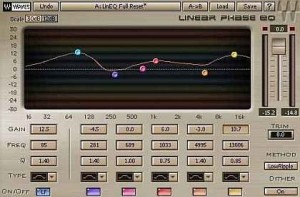
You will be able to set critical parameters such as Low Ripple, etc. all settings that you need to minimize the undesirable effect of drastic EQ changes.
3.) Do not make big EQ changes on all of your tracks. Making big changes such as reducing or cutting 12dB may sound reasonable for one track which cannot be re-recorded. But doing it for all of your tracks are not recommended. Fixing a recording related EQ issue is best solved by re-recording.
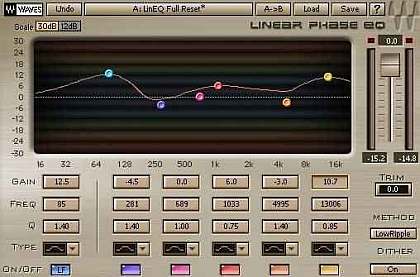

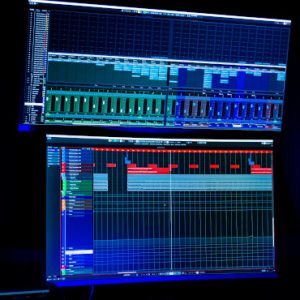
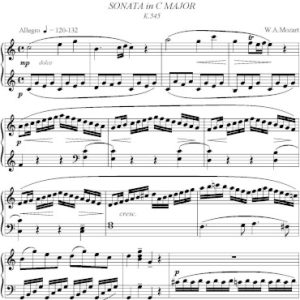
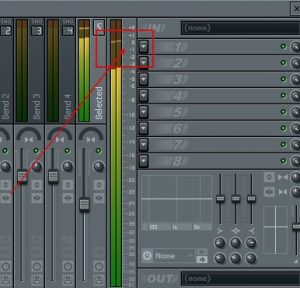

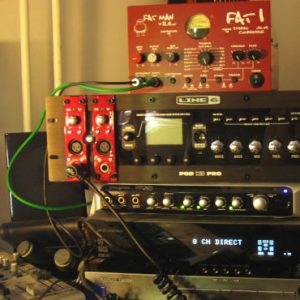

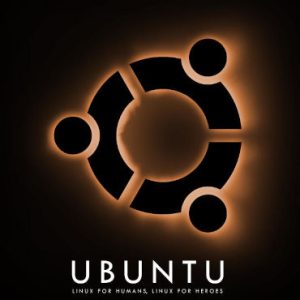
2 Responses
Hi Henry,
Thanks for the feedback. Although I cannot named something that is a poor quality DAW but I can describe it:
A. Quality of Digital summing and computational accuracy
In digital audio mixing, signals are summed in binary math (in 0’s and 1’s). Modern DAW uses higher resolution to reduce these computational errors (since digital is prone to errors because it is not an analog summing which purely sums up the voltages instead of numbers).
Back in the very early days of recording software, they are designed based in the hardware capability at that time. So mostly they only process 32-bit float data internally during digital mixing and plug-in calculations.
But it has been shown that 32-bit float data is more susceptible to experiencing digital errors because the results are rounded up in nature (in some extreme cases of calculation they cannot represent all numbers as the result of the calculation). Because of this, a 32-bit float data would round up to the nearest number. This rounding off can cause errors and will have an effect on sound quality. This is particularly frequent if you do drastic changes in your DAW such as a big EQ change, heavy compression settings, boosting or cutting large amount of dB.
Now, DAW seems to adopt a higher bit float standard which is 64-bit float. As you have expected this 64-bit float number representation can represented a WIDER scope of numbers in the DAW and plug-in calculation. 64-bit float though consumes a lot of CPU and memory usage compared to 32-bit float DAW however, with today’s modern computer hardware (faster and more efficient); this can be easily handled as compared before.
This would result to lesser computational errors in your DAW.
B. Lack of important features
Of course, no one would like to use a DAW that would lack a lot of important features. This is particularly true for older DAWs (and older versions too).
C.) Lack of support for modern plugins
Modern plugins (EQ, compressor, etc) are rewritten by developers to get an improvement in audio mixing quality. However this might appear incompatible to old DAW.
So if you are looking for a DAW, make sure it is modern and has the features as described previously. That would give you a nice audio mixing experience as well as getting that great sound from your mix.
For more details, you can read this post on the advantages of 64-bit DAW over 32-bit float Digital audio workstation.
Hey Emerson,
Fantastic site. Quick question. Here’s the quote.
“Also this will tend to worsen if you are using a combination of bad EQ plug-in, poor quality DAW (digital audio workstation) and bad recorded sound.”
Now…what deems a poor quality DAW?
Thanks again for all the great info.